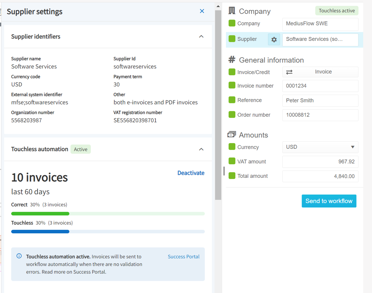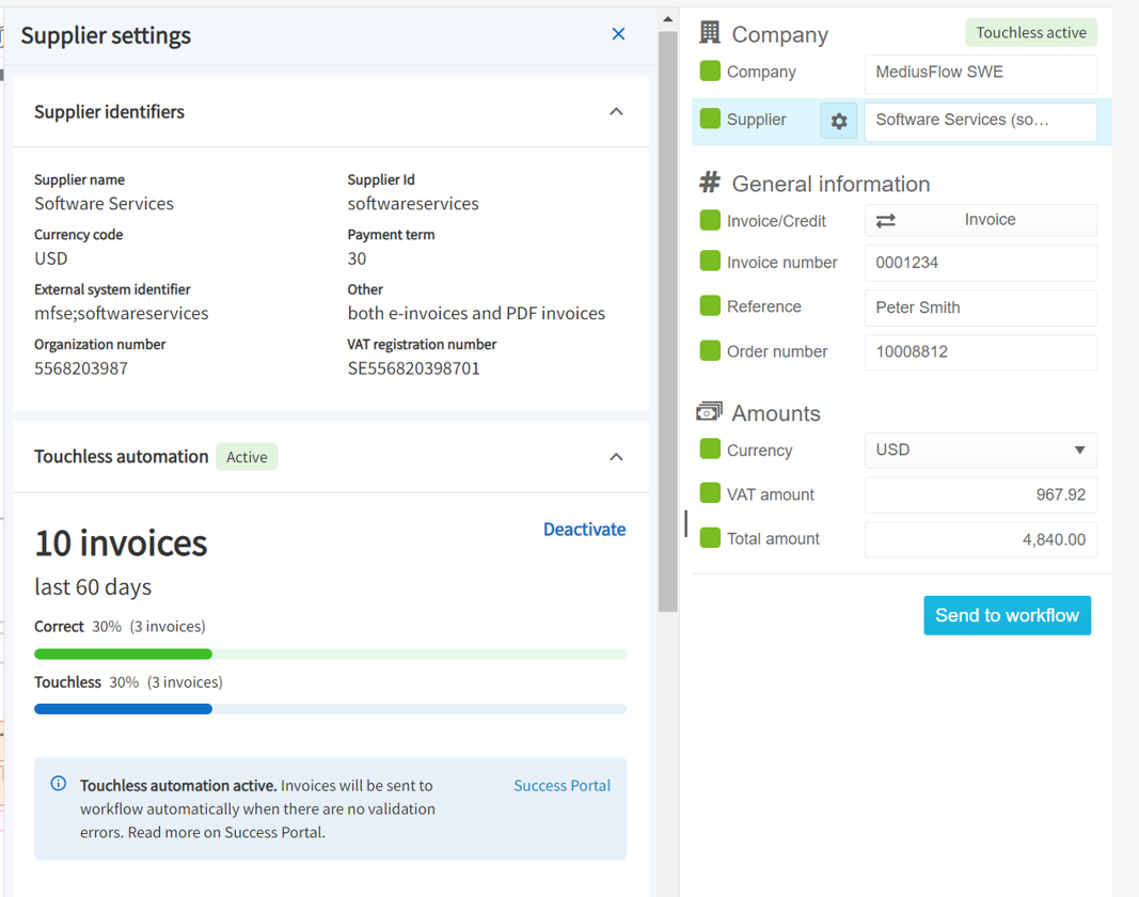Art of modernization: how traditional industries can evolve with tech
Many industries—like manufacturing, food and beverage, and distribution—have relied on manual processes and outdated systems for years. Digital transformation in these sectors can bring big benefits like better efficiency, cost savings, and smarter decision-making. Yet, many businesses hold back because they’re worried about disruptions, expenses, or pushback from employees.
But sticking with old methods has its own price—higher costs, slower production, and trouble keeping up with changing customer needs. Companies that embrace accounts payable automation solutions, AI, and cloud-based financial tools can gain a serious edge without turning their operations upside down.
Why some industries hesitate to modernize
Businesses in regulated, asset-heavy, or traditionally manual industries often delay modern technology adoption. The reasons vary, but common themes include:
"If it isn’t broken, don’t fix it."
Legacy systems may still function, but they create inefficiencies that hinder growth.
Fear of disruption
Leaders worry that implementing new technology will slow production or confuse employees.
Compliance complexity
Meeting industry-specific regulations while adopting new tools can feel overwhelming.
Cash flow constraints
Investing in new technology is often deprioritized for other operational costs.
Skills gaps
Teams may lack experience with modern software, making adoption feel overwhelming.
The reality is that businesses relying on outdated systems face:
Lost time due to slow invoice approvals, payments, and financial reporting.
Increased errors from paper-based or disconnected systems.
Limited visibility, making it harder for financial teams to make informed decisions.
By modernizing, you gain better control over your financial processes while reducing costs and inefficiencies. Let’s look at how key industries are embracing digital transformation with automation.
Modernization in action: how key industries are evolving
Let’s look at how different industries use automation, AI, and digital tools to work smarter and save money.
Manufacturing
Eliminating manual AP processes to improve cash flow
The manufacturing sector has long relied on manual invoice processing and fragmented financial systems, especially in companies with multiple branches. However, businesses like TRS, a leader in Australian refrigerated transport, are streamlining accounts payable with AP automation to boost efficiency and reduce errors.

TRS, handling around 750 monthly invoices across multiple locations, struggled with their old AP system. They needed a secure, reliable, cloud-based solution to integrate easily with their MYOB Advanced ERP. After switching to a modern accounts payable automation system, they achieved:
- Zero errors in the AP process—down from a 5 percent error rate before implementation.
- Cut invoice processing time by over 80 percent in service offices and 90 percent in the procurement department.
- Made managing freight charges way more efficient, with noticeable improvements across the board.
Food & Beverage
Managing high-volume invoices with AP automation
If you’re in food and beverage, you know the challenges—strict safety regulations, perishable inventory, and supply chain complexity. Without an automated AP system, manually processing thousands of supplier invoices leads to bottlenecks, errors, and late payments.

Companies like Mowi, the world’s top seafood provider, are turning to AP automation to tackle issues like disconnected invoice systems and limited visibility. They wanted a solution to streamline their AP process across all locations with high touchless processing to boost efficiency.
Mowi, which processes nearly 320,000 invoices per year, adopted AP automation to:
- Automate 56% of invoice routing cutting manual work and streamlining operations.
- Achieve 72% touchless PO invoice processing for faster payments and seamless matching.
- Gain better visibility into AP processes to spot bottlenecks and drive improvements.
“Because the Medius connector to Infor M3 is thorough and reliable, we can ensure proper accounting and invoice matching across our global business.”
Jørn I. Berg
Group IT Business, Applications Manager, Mowi
Transportation, Logistics & Distribution
Gaining real-time financial control
With customer expectations on the rise and supply chain disruptions becoming the norm, manual logistics just isn’t enough anymore. If you are in transportation and logistics, you’re juggling rising costs, tons of transactions, and supplier contracts across multiple locations—all while staying efficient and controlling expenses.

CEVA Logistics, a global leader in supply chain management, was dealing with fragmented procurement processes and little visibility into company-wide spending. Using multiple systems to track transactions led to overlapping purchases, extra costs, and inefficiencies across teams.
By simplifying its procurement processes, CEVA was able to:
- Save 25% by cutting unnecessary expenses and avoiding supplier duplication.
- Gain full visibility and better control over $360 million in annual spend.
- Standardize procurement workflows while still allowing local teams flexibility.
How to modernize without disrupting operations
Start small with quick wins
Rather than overhauling everything at once, focus on one pain point that delivers quick ROI—like automating invoice approvals.
- Manufacturers: Reduce time spent on invoice matching and approvals.
- Food & beverage companies: Automate supplier payments and compliance tracking.
- Distributors: Implement AI-driven spend analytics for better cash flow management.
Autonomous AP: How to revolutionize your invoice processing
Listen in to this webinar to discover how organizations around the world are using autonomous AP solutions to transform their operations, gain efficiency, and achieve global recognition for innovation. Learn actionable strategies to modernize your AP processes and keep pace with the demands of today’s business environment.

Prioritize employee training and adoption
Technology adoption in traditional industries only succeed when employees embrace it. Ensure success by:
- Providing hands-on training for AP and finance teams.
- Highlighting how automation reduces manual work and improves accuracy.
- Appointing internal champions to support implementation.
Measure impact and scale up
Track cost savings, processing time improvements, and compliance gains to show ROI. Once the first phase succeeds, expand automation to:
- Spend management – Control procurement and expenses in real time.
- Supplier payments – Automate invoice-to-pay workflows.
- Cash flow forecasting – Use AI-driven insights for better financial planning.
Why waiting is no longer an option
Technology is advancing faster than ever, and companies that put off modernization risk being outpaced by more agile competitors. Instead of fearing change, think of technology as a chance to work smarter—boosting efficiency, cutting costs, and improving decision-making. Digital transformation and modernization isn’t about replacing people; it’s about making work easier, less manual, and more focused. If you embrace it now, you’ll set your business up for long-term success.
How Medius makes modernization easier
For businesses in complex industries, overcoming digital transformation challenges doesn’t have to be daunting. Medius provides automated, AI-powered solutions that help organizations:
Reduce reliance on manual processes
Gain real-time visibility into cash flow.
Streamline invoice approvals and supplier payments.
Ensure compliance with industry regulations.
With Medius, you don’t need to overhaul your entire system. Instead, you can start small, see results quickly, and scale automation at your own pace.
Want to explore how automation and AI can help your business?








